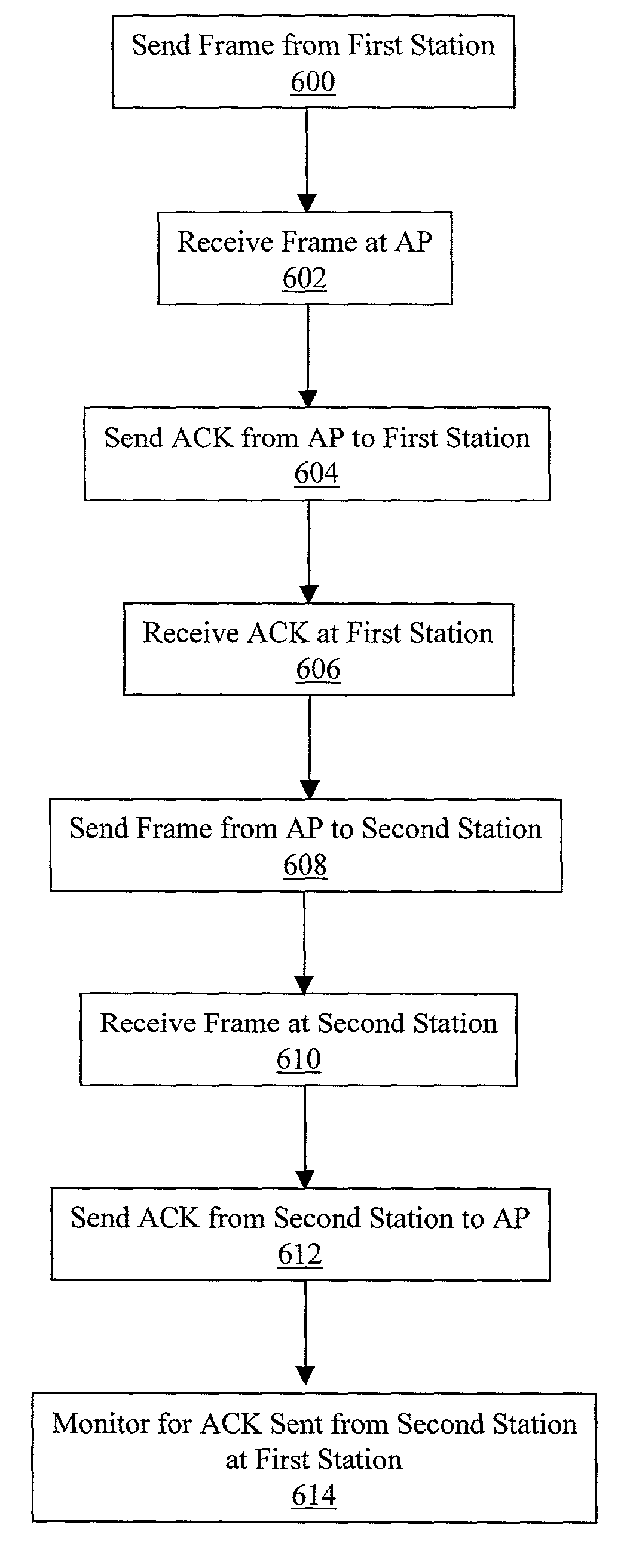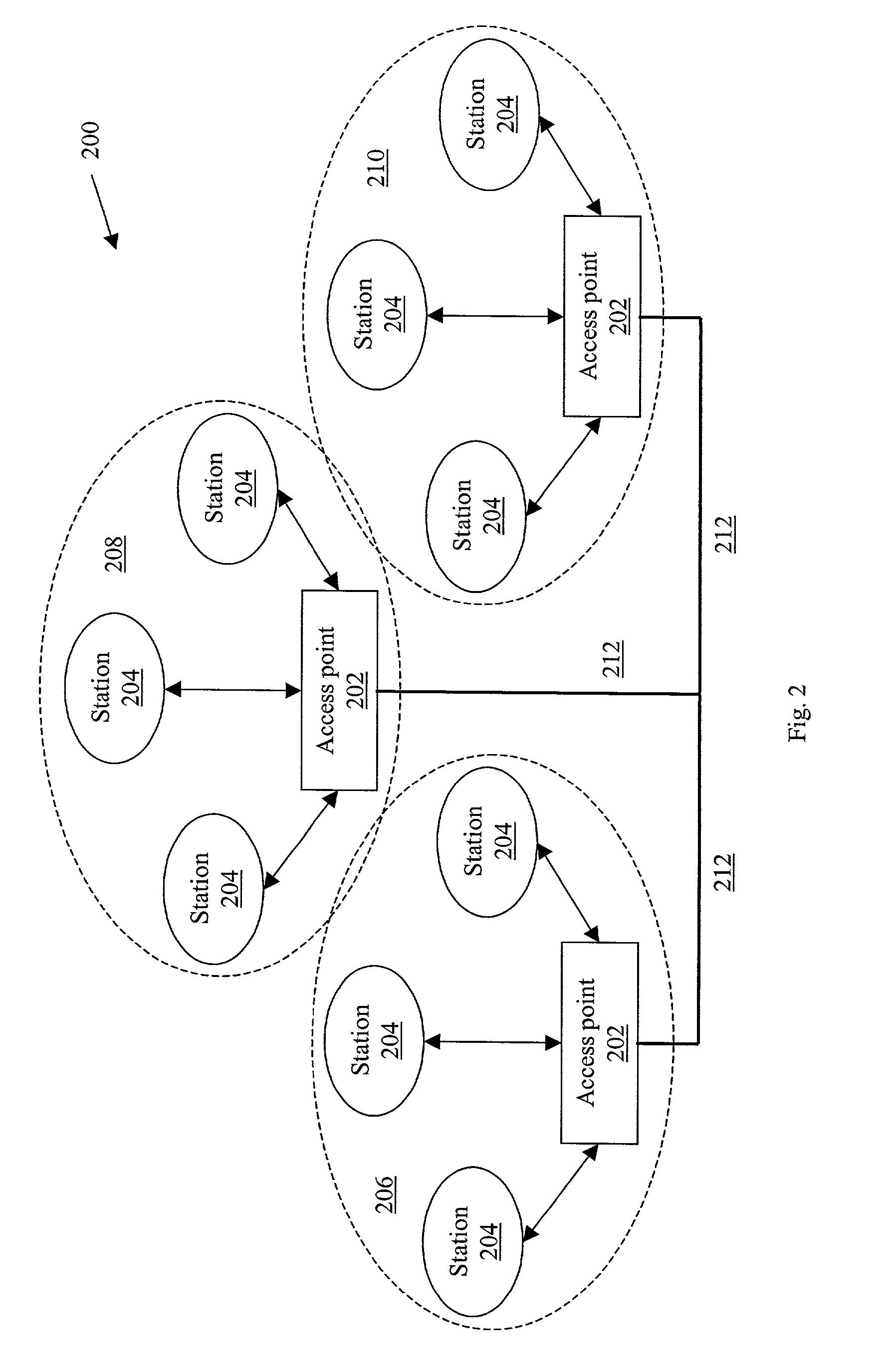Detecting a hidden node in a wireless local area network
- Summary
- Abstract
- Description
- Claims
- Application Information
AI Technical Summary
Benefits of technology
Problems solved by technology
Method used
Image
Examples
Embodiment Construction
[0020]In order to provide a more thorough understanding of the present invention, the following description sets forth numerous specific details, such as specific configurations, parameters, examples, and the like. It should be recognized, however, that such description is not intended as a limitation on the scope of the present invention, but is intended to provide a better description of the exemplary embodiments.
[0021]With reference to FIG. 1, an exemplary OSI seven layer model is shown, which represents an abstract model of a networking system divided into layers according to their respective functionalities. In particular, the seven layers include physical layer 102 corresponding to layer 1, data link layer 104 corresponding to layer 2, network layer 106 corresponding to layer 3, transport layer 108 corresponding to layer 4, session layer 110 corresponding to layer 5, presentation layer 112 corresponding to layer 6, and application layer 114 corresponding to layer 7. Each layer...
PUM
 Login to view more
Login to view more Abstract
Description
Claims
Application Information
 Login to view more
Login to view more - R&D Engineer
- R&D Manager
- IP Professional
- Industry Leading Data Capabilities
- Powerful AI technology
- Patent DNA Extraction
Browse by: Latest US Patents, China's latest patents, Technical Efficacy Thesaurus, Application Domain, Technology Topic.
© 2024 PatSnap. All rights reserved.Legal|Privacy policy|Modern Slavery Act Transparency Statement|Sitemap



